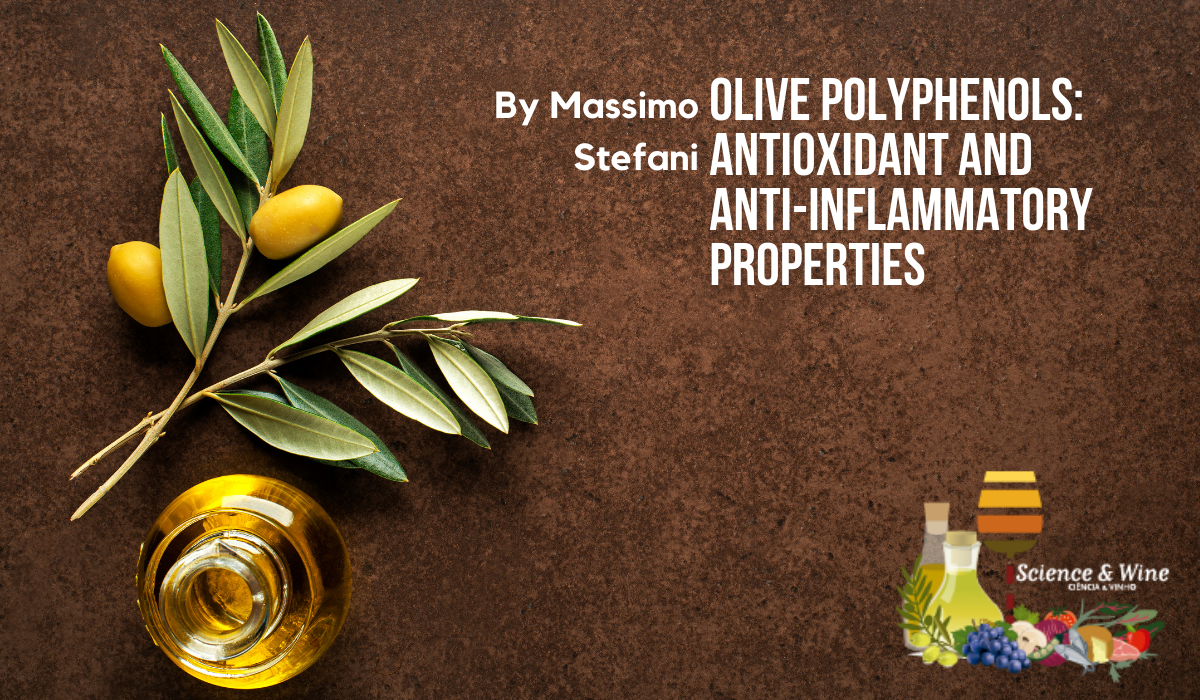By Massimo Stefani
The increasing extension in life duration in advanced countries matches a higher prevalence of several lifestyle- and age-associated pathologies including cancer, neurodegenerative, diseases, cardiovascular diseases (CVDs) and metabolic diseases (the metabolic syndrome, MetS, type 2 diabetes (T2DM), and non-alcoholic hepatitis). These pathologies share common alterations (derangement of proteostasis and the redox equilibrium, remarkable inflammatory response) that heavily impair the biochemical and functional features of the affected tissues. Presently, most of these pathologies lack effective therapies; then, prevention appears the best tool to reduce the risk of these pathological conditions. Accordingly, medical research has progressively focused the importance of lifestyle, a concept where a pivotal role is played by physical exercise, mental activity, and diet.
Since the first evidence, in early 1960s, suggesting an association between alimentation of Mediterranean people and low cardiovascular mortality, the Mediterranean diet (MD) has been the object of many studies on its ability to prevent different chronic-degenerative diseases. An increasing number of epidemiological and observational studies confirm that MD is associated with well ageing, with reduced prevalence of diseases/conditions such as MetS, CVDs, cancer and cognitive decline. The MD can be considered as the heritage of a complex socio-economic development of the Mediterranean populations over centuries, including agricultural, social practices, territorial, and environmental factors intimately associated to the culture and lifestyle of these populations. Recently, modifications of the classical MD have been proposed by the Mediterranean Diet Foundation Expert Group. The new MD pyramid, in addition to the content of characterizing foods (low meat/fish, high fruit vegetables and carbohydrates, presence of red wine, use of olive oil as main lipid source), also emphasizes the importance of other lifestyle-associated elements, (moderation, seasonality, adequate rest, conviviality, and physical exercise). The pyramid also reflects the changes of the MD within the Mediterranean societies in different countries and in various geographical, cultural, and socio-economic contexts of the Mediterranean area. The value of the MD and its associated lifestyle has been recognized in 2010 by the UNESCO, who inscribed the MD in the list of the Intangible Cultural Heritage of Humanity (https://ich.unesco.org/en/RL/mediterranean-diet-00884).

An important feature of the MD is the assumption of a vast array of phytonutrients including vitamins and plant polyphenols. In particular, the latter interfere with multiple signaling pathways involved in protein homeostasis, in the inflammatory response and in the regulation of both metabolism and the antioxidant defenses, often recalling a caloric restriction (CR) regimen; these effects affect positively, among others, metabolism, mitochondrial turnover, oxidative stress and the inflammatory and neuroinflammatory response. Polyphenols can reach these effects by counteracting signaling pathways responsible for the cascade reactions involved in aging. Present data support the idea that different plant polyphenols, mimic CR effects and modulate the expression of factors involved in autophagy and apoptosis also through epigenetic modifications, thus affecting the same, or very similar, cellular targets.
Polyphenols are found in many foods of plant origin that play pivotal roles in the MD, including, red wine, extra virgin olive oil (EVOO), green tea, spices, berries, and aromatic herbs. The content of polyphenols in these foods and their bioavailability are quite low; however, the daily assumption, during lifespan, of these foods ensures a reduced, yet continuous, intake of these molecules, providing a rationale for the association between their dietary content and a reduced incidence of aging-associated pathologies reported by many population/epidemiological studies and clinical trials.
Many recent studies have highlighted that, in several aging-associated pathologies such as amyloid diseases, CVDs and the MetS, plant polyphenols do not simply interfere with a single step of disease pathogenesis; rather, their positive outcomes result from multi-target effects leading to restore altered homeostatic systems in cells and tissues. In addition, the chemical similarities of these structurally distinct molecules can explain why they can induce similar effects. Among others, the importance for health of natural polyphenols has been associated to their remarkable antioxidant power, mostly elicited through the modulation of oxidative pathways that results from the interference with enzymes, proteins, receptors, transcription factors and signaling pathways. The ability of plant polyphenols to interfere with the biochemical homeostasis has also been taken into consideration, and epigenetic modifications of chromatin have been reported to be involved in these effects.
Many studies carried out in cultured cells, in model organisms and in humans support the medicinal efficacy of natural polyphenols. An increasing number of studies has also appeared on the biochemical and biological effects of the polyphenols elaborated by the olive tree (Olea Europaea), found in the leaves and drupes of the tree; the latter are important as phytoalexins that the plant elaborates for defense against microbes, fungi and leaf-eating insects. EVOO contains over 30 phenolic compounds, including the most represented oleuropein, verbascoside, oleocanthal, hydroxytyrosol (HT), tyrosol, and others. The healthy value of EVOO and olive leaf extracts has been recognized since long time and scientifically investigated. Recent studies have focused the biological properties of these molecules, including the antimicrobial, hypoglycemic, vasodilator, antihypertensive, antioxidant and anti-inflammatory ones, whose clinical importance was first reported in 1950. These properties led to include in the European Pharmacopoeia (Ph. Eur.) the alcoholic extract (80%) of olive leaves containing, in addition to minor components, oleuropein, HT, caffeic acid, tyrosol, apigenin and verbascoside.

The protection by olive polyphenols against several aging-associated, chronic degenerative and neurodegenerative conditions have been extensively investigated together with the molecular determinants of these effects. Olive polyphenols protect cells against oxidative damage resulting from redox dyshomeostasis and an excessive inflammatory response, important contributors of age-related pathologies such as cancer, T2DM, MetS, osteoporosis and neurological diseases. Finally, population studies have provided evidence of a significant association between MD, EVOO assumption, and reduced risk of both CVDs and cognitive decline. A recent review of the scientific literature focused on clinical trials and population studies has confirmed that the MD and the fortification of the aliments with olive leaf extracts protect significantly against aging-associated degenerative diseases and cancer. Accordingly, plant polyphenols, are increasingly taken into consideration to develop new drugs especially designed to combat several chronic degenerative pathologies, including aging-associated neurodegeneration.
Read all paper at: https://www.mdpi.com/2076-3921/10/7/1044

Massimo Stefani, presently retired, has been full professor of Biochemistry at the University of Firenze until 2020. He still studies biophysical and molecular biology issues of protein folding, misfolding and amyloid aggregation and aggregate cytotoxicity to living systems. He also studies the molecular basis of the beneficial properties of olive polyphenols against aging-associated neurodegeneration. He is author of over 180 scientific papers in outstanding international journals widely cited (around 13000 total citations, HI value of 52). He still collaborates with many Italian and foreign researchers and has deposited three patents concerning the use of oleuropein aglycone and its derivatives against type-2 diabetes and aging-associated neurodegeneration.

